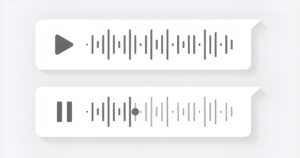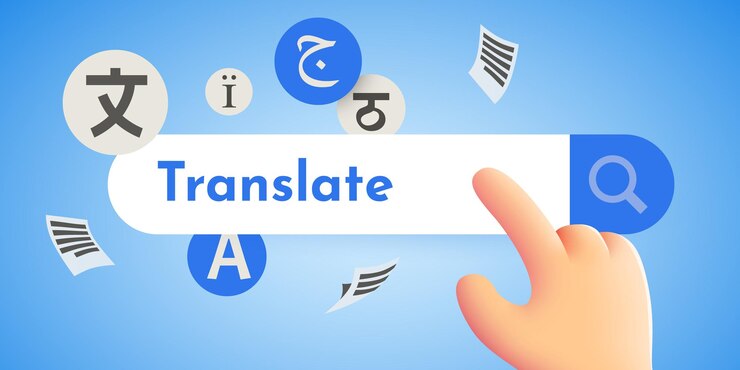Imagine You’re sitting in a café, sipping coffee, when your phone buzzes. A friend studying abroad sends you a three-minute WhatsApp voice note—in Spanish. You don’t speak Spanish, but you need to know what it says. Maybe it’s urgent, maybe it’s a funny story you don’t want to miss. Either way, you’re stuck with an audio file you can’t understand. Sounds familiar? You’re not alone.
Every day, millions of WhatsApp users exchange voice messages in hundreds of languages. It’s fast, personal, and often easier than typing. But here’s the catch—voice notes don’t come with a handy “Translate” button. If you’ve ever wished for one, you’re exactly the type of reader this guide is written for. The good news? You can translate WhatsApp voice notes instantly, for free, using a few smart tricks and apps.
Why This Problem Matters in Real Life
Language barriers are not just about missing a joke. Students often receive academic notes from classmates in a language they don’t fully understand. Travelers may get instructions from locals while abroad, but can’t make sense of the voice note. Professionals working remotely with global teams might hear project updates in French, Hindi, or Arabic. And then there are personal moments—family messages, greetings, or even emergency updates—where every word counts.
WhatsApp has become the world’s favorite messaging app with over 2.7 billion active users (Statista, 2025). That means conversations cross borders every single second. Yet, when it comes to voice notes, the app still doesn’t offer a built-in translation feature. You can translate text messages directly, but for audio? You’re left in the dark. That’s where third-party tools and a little creativity come in.

Step 1: Convert the Voice Note to Text
Before you can translate anything, you need to turn that voice into words you can work with. This process is called transcription. Think of it like subtitles for your voice notes.
There are free apps and methods that can do this quickly:
-
Google Recorder (Android only)
-
If you’re using a Pixel or certain Android phones, you already have a recorder app that transcribes audio in real time.
-
Play the WhatsApp voice note on loudspeaker, hit record, and watch the words appear.
-
Once transcribed, you can copy the text into Google Translate.
-
-
Otter.ai (iOS & Android)
-
Free plan available with limited monthly minutes.
-
Upload or play the voice note, and Otter will transcribe it.
-
It’s widely used by students for lectures and meetings, so accuracy is usually reliable.
-
-
Voicepop (WhatsApp-friendly)
-
This app is designed specifically for WhatsApp voice notes.
-
It plugs right into WhatsApp, automatically converting voice notes into text.
-
While not perfect, it saves time by skipping the copy-paste process.
-
-
iOS Live Text with Shortcuts (iPhone)
-
On iOS 16+, Apple’s Live Text feature lets you capture text from almost anywhere.
-
Combine this with a voice-to-text shortcut and you can quickly turn audio into words.
-
According to Apple Support, Live Text is optimized for multiple languages.
-
By the end of this step, you’ve got the original voice note in text form. Half the battle is already won.
Step 2: Translate the Transcribed Text Instantly
Now that you have the text, translation becomes easy. Here are some tried-and-tested free tools:
-
Google Translate (Web & App)
-
Supports over 100 languages.
-
Paste your transcribed text and get an instant translation.
-
You can even tap the speaker icon to listen to it in another language.
-
-
DeepL Translator
-
Especially strong for European languages (German, French, Spanish, Italian).
-
More natural and accurate than Google in certain cases.
-
-
Microsoft Translator
-
Available as a free app.
-
Can also translate text conversations in real time if you use it alongside WhatsApp.
-
-
Yandex Translate
-
Useful for rare or less common languages, like Uzbek or Georgian.
-
Travelers often find it more reliable for regional dialects.
-
So now you’ve gone from “I have no clue what this voice note means” to “I understand it word for word.” And the best part? You did it without spending a cent.
Quick Comparison Table: Best Free Tools
| Tool | Platform | Strengths | Best For |
|---|---|---|---|
| Google Recorder | Android | Real-time transcription, offline support | Everyday users |
| Otter.ai | iOS & Android | Accurate transcriptions, speaker ID | Students & professionals |
| Voicepop | WhatsApp add-on | Directly works with WhatsApp voice notes | Frequent WA users |
| Google Translate | Web & App | Wide language coverage, speech playback | General translation |
| DeepL Translator | Web & App | Natural phrasing for EU languages | Professionals & writers |
| Microsoft Trans. | Web & App | Integrates well with Office & Teams | Work & business users |
| Yandex Translate | Web & App | Covers rare/regional languages | Travelers in Eurasia |
Personal Example: When I Tried It
A while back, a friend in Brazil sent me a WhatsApp voice note in Portuguese. I don’t speak Portuguese beyond “obrigado,” so I had no idea what he was saying. I used Otter.ai to transcribe the note, then ran the text through Google Translate. Within seconds, I knew he was inviting me to a virtual meetup with some mutual friends. Without that quick translation, I might have ignored the message, thinking it was casual chatter. Instead, I showed up, had a great time, and learned how powerful these tools can be for keeping human connections alive across languages.
Advanced Methods: AI Tools, iOS/Android Shortcuts & Browser Hacks
So, you’ve tried the basic way: transcribe → translate. It works, but what if you want something faster? Something that feels almost like magic—tap once and boom, your WhatsApp voice note is translated instantly? That’s where advanced methods come in. Thanks to AI tools, clever mobile shortcuts, and a few browser hacks, you can take WhatsApp translation to the next level. Let’s break it down.
AI-Powered Tools That Make It Seamless
Artificial intelligence has transformed how we deal with languages. Apps that once needed you to manually copy-paste now do it all automatically. Here are some AI-powered options I’ve tested that really make a difference:
1. Veed.io (AI Transcription + Subtitles)
-
Originally built for video creators, but works for audio too.
-
Upload the WhatsApp voice note, and it auto-generates text plus subtitles in multiple languages.
-
It’s surprisingly accurate with accents. For example, I tried an Indian English note, and it nailed the tricky pronunciations.
-
Free version has limits, but for short voice notes, it’s more than enough.
2. Sonix.ai
-
Known for professional-grade transcriptions.
-
Not only transcribes but also lets you instantly translate transcripts into 30+ languages.
-
Students and journalists swear by it for interviews.
-
Great option if you need both transcription and translation in one go.
3. Ava (Accessibility App)
-
Built for people with hearing difficulties, but turns out it’s perfect for WhatsApp voice notes too.
-
Live captions appear instantly, and you can switch languages for translation.
-
If you’ve ever been in a noisy café and struggled with an audio note, Ava can save the day.
These tools combine AI transcription and translation into a single step, cutting your time in half.
iOS Shortcuts: Automating the Process
If you’re an iPhone user, Apple’s Shortcuts app is your best friend. It’s free, pre-installed, and lets you create automation workflows. Here’s a simple one you can build in minutes:
-
Download the WhatsApp voice note.
Tap and hold the note → Save to Files. -
Create a Shortcut with “Transcribe Audio.”
Use Apple’s speech recognition API (available in Shortcuts). -
Add a “Translate Text” Action.
Link it to Microsoft Translator or Google Translate. -
Final Step → Show Result.
The Shortcut automatically outputs the translated text on your screen.
So next time, instead of juggling apps, you just tap one Shortcut icon and watch the magic happen.
👉 According to Apple Developer Docs, the speech recognition API supports over 60 languages. That means most global languages are covered.
Android Hacks: Google Lens + Gboard Trick
Android users don’t get left behind. If you want to translate WhatsApp voice notes instantly, here’s a combo that works brilliantly:
-
Play the voice note on loudspeaker.
Open Google Recorder (Pixel) or any voice-to-text app. -
Use Gboard (Google Keyboard).
Copy the transcribed text into any app with Gboard active.-
Tap the Google Translate icon right on your keyboard.
-
Boom, your text is instantly translated without leaving the screen.
-
-
For rare languages:
Open Google Lens, point it at the transcription (screenshot), and hit Translate.
This method is insanely practical if you’re traveling. Picture this: you’re in Turkey, someone sends you a voice note in Turkish, and within seconds, you’ve got an English translation without leaving WhatsApp.
Browser-Based Hacks: Perfect for Students & Professionals
Sometimes you don’t want to mess with apps at all. Maybe you’re at your laptop, preparing for a project or assignment. In that case, browser-based solutions are gold.
1. Vocalmatic (Web App)
-
Upload audio files directly from your computer.
-
Auto-transcribes and translates into your chosen language.
-
Works best with Chrome for smoother processing.
2. Google Docs + Voice Typing Hack
-
Open Google Docs → Tools → Voice Typing.
-
Play the WhatsApp voice note on your computer’s speaker.
-
Google Docs writes it down in real time.
-
Copy text → Paste into Google Translate.
-
Bonus: If you’re already using Google Docs for notes, this hack fits perfectly into your workflow.
3. LingvaNex Web Translator
-
Similar to Google Translate but with extra customization.
-
Uploads audio directly in some cases.
-
Handy for longer voice notes that exceed Google Translate’s text character limit.
When Speed Matters: Real-Life Scenarios
-
Students abroad: Imagine you’re in Germany, and a classmate sends you a quick explanation of the homework—in German. Using the iOS Shortcut or Gboard method, you’ll understand it instantly without awkwardly asking them to repeat it in English.
-
Travelers: A local host in Thailand sends you directions to your Airbnb in Thai. Instead of panicking, you use Google Recorder + Gboard Translate, and within seconds, you know exactly where to go.
-
Business pros: Your colleague in Mexico leaves a voice update on a project. You don’t speak Spanish, but Sonix.ai auto-translates the transcript and emails you the summary. No missed deadlines.
Advanced Tools vs. Basic Tools: Quick Comparison
| Feature | Basic Method (Transcribe + Translate) | Advanced Method (AI/Shortcuts/Hacks) |
|---|---|---|
| Setup Time | 2–3 minutes | 30 seconds or less |
| Accuracy | Good | Excellent (handles accents better) |
| Cost | Free | Mostly free (some premium extras) |
| Best For | Casual users | Students, travelers, professionals |
| Cool Factor | Feels manual | Feels like magic ✨ |
Best Practices, Privacy Concerns & Final Takeaways
By now, you’ve seen how easy it is to translate WhatsApp voice notes instantly for free—from basic transcription apps to advanced AI shortcuts. But before you dive in and start translating every voice note that lands in your inbox, there are a few important things to keep in mind. Like anything involving communication and technology, best practices and privacy matter just as much as convenience.
Best Practices for Smooth Translations
1. Use Headphones When Possible
Ever tried transcribing a voice note in a noisy environment? The background chatter messes up the transcription accuracy. Plugging in headphones with a mic often makes the recognition far more precise.
2. Keep Messages Short for Better Accuracy
Most free tools work best with clips under 2–3 minutes. If someone sends you a five-minute rant, consider splitting it into smaller chunks before transcribing and translating.
3. Double-Check Critical Info
If a voice note includes sensitive details—like addresses, medical instructions, or legal terms—don’t rely on a single translation. Cross-check with another tool (Google Translate + DeepL, for example).
4. Save Your Translations if They’re Important
Students preparing for exams or professionals handling projects should save their translated transcripts. Tools like Otter.ai and Google Docs make it easy to archive everything in one place.
5. Respect the Original Speaker’s Tone
Translation is not just about words; it’s about meaning. A casual joke might sound serious if translated too literally. Always keep context in mind when sharing translations with others.
Privacy Concerns You Shouldn’t Ignore
Now comes the big question: is it safe to upload WhatsApp voice notes to third-party apps?
The short answer: mostly yes, but with caution. Let’s break it down.
-
End-to-End Encryption
WhatsApp itself encrypts all your voice notes. But once you download and upload them to an external service (like Veed.io or Sonix), you’re stepping outside that safe zone. -
Cloud Storage Issues
Some apps keep copies of your audio files on their servers for “quality improvement.” Always check the privacy policy. If you’re dealing with sensitive work files or personal conversations, pick tools with transparent security standards. -
Offline Options = Safer
If privacy is a top concern, stick to offline transcribers like Google Recorder or iOS Shortcuts. Since nothing gets uploaded, your data stays on your device. -
Student & Work Consideration
Imagine a student recording a lecture or a team member translating a client’s note. Leaking that data accidentally could be a real problem. That’s why professional users should lean toward apps with enterprise-grade privacy.
According to WhatsApp’s FAQ on security, encryption only applies inside WhatsApp. Once exported, it’s up to the external app to keep it safe.
Real-Life Use Cases Where This Really Helps
-
Students abroad: You’re studying in Japan, and your professor leaves a voice note in Japanese. You quickly transcribe and translate it into English before your study group meets. You save time and avoid embarrassment.
-
Travelers: A taxi driver in Istanbul sends you a voice note with pickup instructions in Turkish. Instead of fumbling, you translate it instantly and head to the right spot.
-
Small Business Owners: Your supplier in China sends updates in Mandarin. Using a quick AI transcription + translation combo, you understand every word before signing the delivery confirmation.
-
Everyday Users: Your cousin sends you a birthday message in Spanish. You translate it and reply back in Spanish too—building stronger bonds even across languages.
Quick FAQ: Translate WhatsApp Voice Notes Instantly
Q1. Can I translate voice notes directly inside WhatsApp?
Not yet. WhatsApp allows text translation but doesn’t support voice note translation. You’ll need a third-party tool.
Q2. Do I have to pay for these apps?
Most basic methods (Google Translate, Google Recorder, Gboard, iOS Shortcuts) are 100% free. Some advanced AI tools like Sonix or Otter.ai offer premium features, but the free tiers are usually enough.
Q3. What about rare languages?
For common global languages (Spanish, Arabic, Hindi, etc.), accuracy is excellent. For rare or regional ones, try Yandex Translate or community-driven tools like LingvaNex.
Q4. How accurate are these translations?
It depends on audio quality and language pair. Expect around 90–95% accuracy with clear recordings. Heavy accents or noisy environments may drop it lower, so always double-check.
Q5. Is it safe to upload private notes?
If your voice notes contain personal or work-sensitive info, use offline transcription tools. For casual or everyday notes, online apps are fine if you trust their privacy policy.
Final Takeaways: Breaking Language Barriers
So, what’s the bottom line? Translating WhatsApp voice notes instantly isn’t just a neat trick—it’s a game-changer. Whether you’re a student juggling foreign lectures, a traveler navigating new cities, a professional working with global teams, or just someone who wants to connect with family abroad, these methods open doors that once felt locked.
Here’s what to remember:
-
Start simple with free transcribe-and-translate tools.
-
Level up with AI apps, iOS Shortcuts, or Android hacks if you need speed.
-
Always keep privacy in mind—offline = safer.
-
Double-check translations when it really matters.
When you step back, it makes sense. Language should never be a barrier in a world where connection is everything. With a few taps, you can understand anyone, anywhere—instantly, for free. And that’s powerful.
References & Sources




